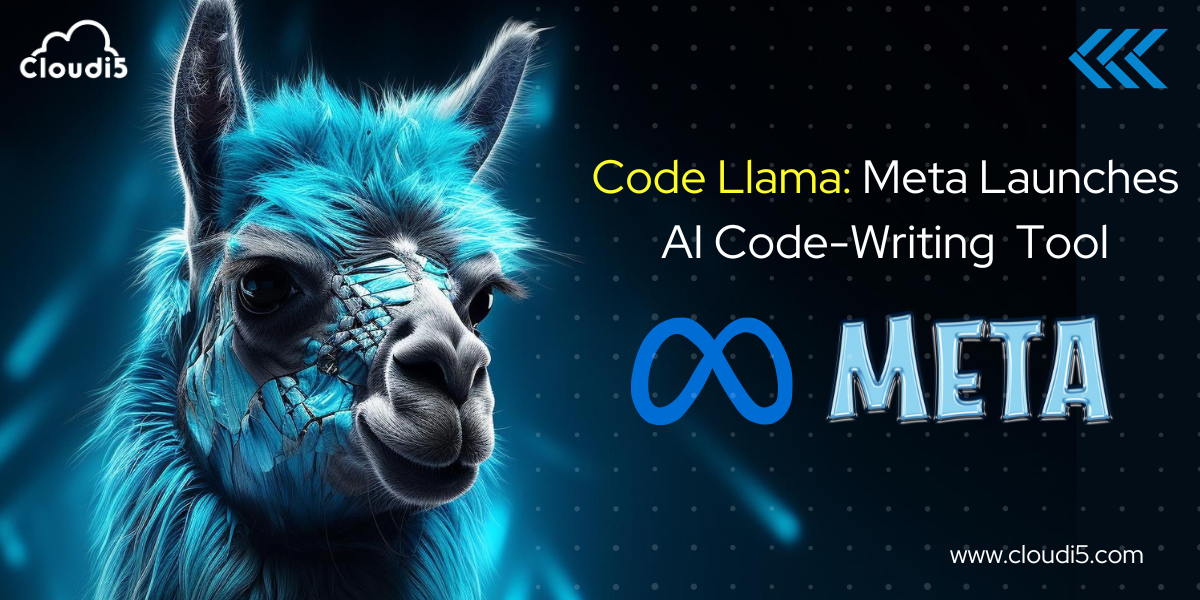
Code Llama: Meta Launches AI Code-Writing Tool
"Ever wonder what it would be like to have a Llama that could write code for you? Well, now you can with Code Llama!"
Introducing Code Llama, the AI code-writing tool that's so good, it's almost as good as a real Llama.
Meta Launches Code Llama, an AI Code-Writing Tool to Make Developers More Productive
Meta, the parent company of Facebook, has launched a new AI code-writing tool called Code Llama. Code Llama is Large Language Model (LLM) that can generate new code and debug human-written work. It is designed to make developers more productive by automating repetitive tasks and helping them to write better code.
Code Llama is trained on a massive dataset of code and Natural Language. This allows it to understand the meaning of code and to generate code that is both correct and efficient. Code Llama can also be used to debug code, by finding and fixing errors.
In addition to generating new code, Code Llama can also be used to complete and debug existing code. This can be helpful for developers who are working on complex projects or who are not familiar with a particular programming language.
Code Llama is one of a number of AI code-writing tools that have been developed in recent years. Other notable examples include Google's Magenta and OpenAI's Codex. These tools have the potential to revolutionize the way that software is developed, by making it faster, easier, and more efficient to write code.
Meta is releasing Code Llama for both research and commercial use. Code Llama is available under a community license, which means that it can be freely used, modified, and redistributed. It supports many of the most popular programming languages used today, including Python, C++, Java, PHP, Typescript (Javascript), C#, Bash and more.
How to Use Code Llama?
To use Code Llama, you will need to have a working knowledge of Python and the Code Llama Hugging Face Transformers library. Once you have installed the necessary dependencies, you can follow these steps:
- Create a new Python file and import the Code Llama class from the transformers library.
- Create an instance of the Code Llama class and specify the language of the code you want to generate.
- Call the generate_code() method on the Code Llama instance and pass in a natural language prompt.
- The generate_code() method will return a string of code that matches the prompt.
The three sizes of Code Llama are:
The Code Llama release includes models with 7, 13, and 34 billion parameters:
- 7B parameters: This is the smallest model and is designed for research and experimentation.
- 13B parameters: This is a mid-sized model that is suitable for most development tasks.
- 34B parameters: This is the largest model and is designed for demanding tasks such as large-scale code generation and debugging.
All three models are trained on a massive dataset of code and natural language. This allows them to understand the meaning of code and to generate code that is both correct and efficient.
The 7B and 13B base and instruct models have also been trained with fill-in-the-middle (FIM) capability, allowing them to insert code into existing code. This means that they can support tasks like code completion right out of the box.
Code Llama is designed to support software engineers in all sectors, including research, industry, open source projects, NGOs, and businesses.
It can be used for a variety of tasks, such as:
- Generating new code
- Debugging code
- Completing existing code
- Translating code from one language to another
- Recommending new features or improvements to code
Code Llama is still under development, but it has the potential to be used in many other ways.
Meta hopes that Code Llama will inspire others to leverage Llama 2 to create new innovative tools for research and commercial products.
It is a successor to the Llama 1 language model, released in the first quarter of 2023. Llama 2 is trained on a dataset of publicly available internet data, enjoying the advantage of a dataset both more recent and more diverse than that used to train Llama 1.
Llama 2 has 2 trillion tokens, which is double the context length of Llama 1. Its fine-tuned models have been trained on over 1 million human annotations. Llama 2 outperforms other open source language models on many external benchmarks, including reasoning, coding, proficiency, and knowledge tests.
Llama 1 is no longer available for public use. It was only released to a limited number of researchers and developers for evaluation purposes.
Conclusion
Code Llama is a powerful new tool that has the potential to revolutionize the way we code. It is still under development, but it has already learned to perform many common coding tasks. As it continues to learn, Code Llama will become an even more valuable tool for programmers.
"Code Llama is the perfect coding assistant for people who are always getting their code rejected by their boss. Just don't let the secret out that your secret coding weapon is a fluffy llama in disguise!"
Trusted By












Leave Comments